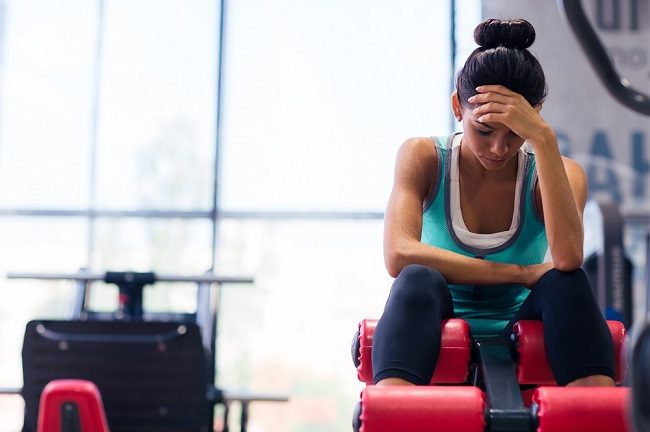Yoga is an effective stress reliever and also a way to ease symptoms of anxiety. By shifting focus and attention from the surroundings to one’s body and breath, yoga can help to temper anxiety and also release physical tension. Stress-related diseases and issues are on the rise in India. As per data from Optum, a leading provider of employee assistance programmes to corporates, around 46% of the workforce in Indian organisations suffers from some or the other form of stress. Let’s now practice yoga to de-stress and release all the negative toxins from our body:
1. Easy Pose
This is a beginner asana that helps you to open your hips, lengthen your spine, and eliminate all anxiety and mental exhaustion from your mind and body. To begin with, sit on the edge of a mat or blanket. Extending your legs in front of your body and sit straight. Cross your legs and place each foot beneath the other knee. After you’ve folded your legs, place your hands on your knees. Try and balance your weight evenly across your body. Align your head, neck, and spine straight. Try to relax your feet and thighs. Hold this pose for one minute, then slowly releasing; change the cross of your legs.

2. Child’s Pose
Child’s Pose is one of the most soothing poses for the adrenals. Practicing this pose regularly can be great for both, mind and body. Begin by sitting back over your heels and stretch your hands out in front of you. Now slowly fold your torso forward until your forehead touches the floor. With your toes touching, keep your knees together. Try to touch your hips to the back of your heels. Stay in this pose for at least 10-20 breaths and let go as much as you can with every exhale.

You May Also Like: 5 Best Yoga Poses To Help You Sleep Like A Baby
3. Low Lunge Pose
The lunge pose is great to relax your inner thighs. Take your left foot back and bring your right knee in towards your chest, assuming a one-legged plank. Then point the toe of your left foot and lift your hips high as you place your right foot next to the right hand. Place your fingertips beneath your shoulders and inhale to a flat back. Now place your left knee down on the mat. Bring your torso back over your pelvis, with hands on your front thighs, and hold the stretch. If done correctly, you will feel the stretch in your inner thighs.

4. Seated Forward Bend
This pose is best known to help calm a distracted mind. All you have to do is, keep both the feet flexed, spine straight and then slowly go down and lower your forehead towards your knees. Count till 20. Repeat it five times.

5. Corpse Pose
This is pose of total relaxation, making it one of the most challenging asanas. It gives the nervous system a chance to integrate that in what can be thought of as a brief pause before it is forced once again to deal with all the usual stresses of daily life. To do the corpse pose, you first need to lie on your back and close your eyes, put your arms by your sides, palms facing up. Now allow your ankles to fall outwards. Allow your body to melt deeper within yourself with each breath that you take. Stay in this pose for a minimum of 5 minutes. Your body will be rejuvenated.

You May Also Like: Things you should know about Yoga Nidra
So the next time you feel the stress or anxiety creeping in, take a deep breath, remove your shoes and do a little Namaste. It is time to de-stress with our easy yoga poses that can be done anytime, anywhere.
Disclaimer: This post was written by our guest contributor. The content herein is owned by the blogger. Gympik is not responsible for any kind of infringement caused.


 Traqade
Traqade
































Your article is very positive
The article appears as an extremely attractive topic to explain. Your post is extremely helpful to me. Thanks for your great post. I am especially happy to take a look at your post.
Nice Article here.
I was struggling with how to write a term paper and the guide at term paper outline https://domyessay.com/blog/how-to-write-a-term-paper came to my rescue. The article offers a step-by-step approach to writing a term paper, covering everything from choosing a topic to drafting and revising. It provides practical advice on conducting research, structuring the paper, and adhering to academic standards. This resource has been incredibly helpful in demystifying the process and boosting my confidence in tackling term papers.
A very good method of dealing with stress. And most importantly, it’s really effective. And from personal experience I recommend you read about even less effective methods of fighting stress. From time to time I put them into practice.